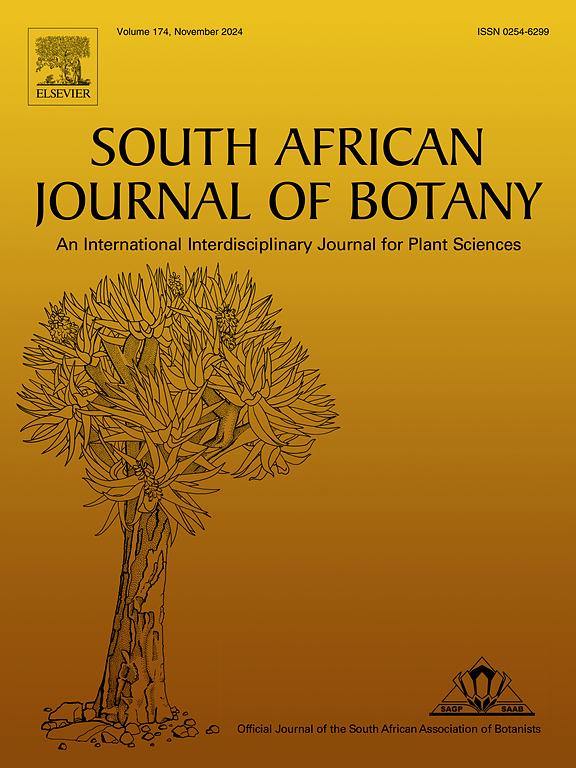Do structural and functional traits modulation determine the ecological fate of castor bean (Ricinus communis L.) under variable pedospheric and atmospheric conditions?
IF 2.7
3区 生物学
Q2 PLANT SCIENCES
引用次数: 0
Abstract
Ricinus communis (Euphorbiaceae) is a highly valuable industrial crop, providing essential materials such as rubber, oil, and seed cake, which are used in textiles, plastics, varnishes, and electrical insulation. Beyond its economic importance, understanding the structural and functional adaptations of R. communis in its natural environment is crucial for comprehending its ecological dynamics and broader environmental impact. This research not only links its industrial significance to its ecological role but also contributes to its sustainable cultivation and management. To gain deeper insights into these adaptations, a study was conducted on fifteen natural populations of R. communis, collected from diverse and challenging habitats (i.e., open barren fields, agricultural lands, water channels and roadsides) in Punjab, Pakistan. The aim of this study is to uncover how R. communis adapts to a wide range of climatic and soil conditions, providing a comprehensive understanding of its resilience strategies. Results showed that open and barren land populations exhibited superior above-ground growth and biomass accumulation, along with remarkable physiological adaptations, including elevated levels of beneficial ions, osmolytes (soluble proteins, proline, and glycine betaine), and antioxidants (superoxide dismutase, catalase, and peroxidase). Additionally, these populations displayed anatomical characteristics such as an enlarged root cellular area, intensive sclerification, a thicker endodermis in roots, thicker collenchyma and epidermal layers, larger cortical and phloem regions in the stems, and thicker leaves with larger stomata. Agricultural field populations displayed elevated levels of photosynthetic pigments and improved root structures, with wider metaxylem vessels that enhance water and nutrient uptake. Populations growing along water channels exhibited significant adaptations, such as larger leaves, increased below-ground biomass, and enlarged cortical cells and vascular bundles in all organs. It is concluded that R. communis has evolved adaptive mechanisms at both the structural and functional levels to ensure survival under diverse climatic and pedospheric conditions. Understanding the specific adaptations and mechanisms employed by R. communis under different stresses is crucial for crop management and the development of breeding programs aimed at enhancing its resilience and productivity.

求助全文
约1分钟内获得全文
求助全文
来源期刊

South African Journal of Botany
生物-植物科学
CiteScore
5.20
自引率
9.70%
发文量
709
审稿时长
61 days
期刊介绍:
The South African Journal of Botany publishes original papers that deal with the classification, biodiversity, morphology, physiology, molecular biology, ecology, biotechnology, ethnobotany and other botanically related aspects of species that are of importance to southern Africa. Manuscripts dealing with significant new findings on other species of the world and general botanical principles will also be considered and are encouraged.
 求助内容:
求助内容: 应助结果提醒方式:
应助结果提醒方式:


